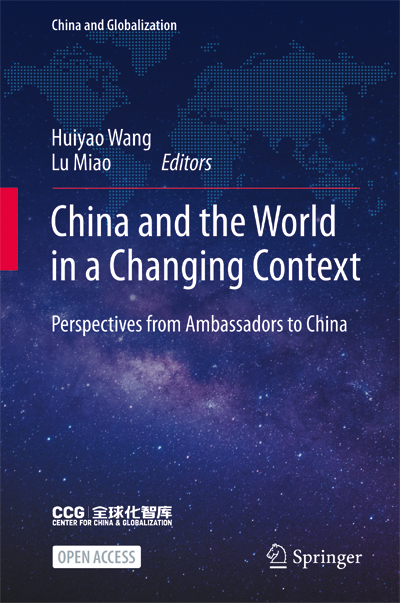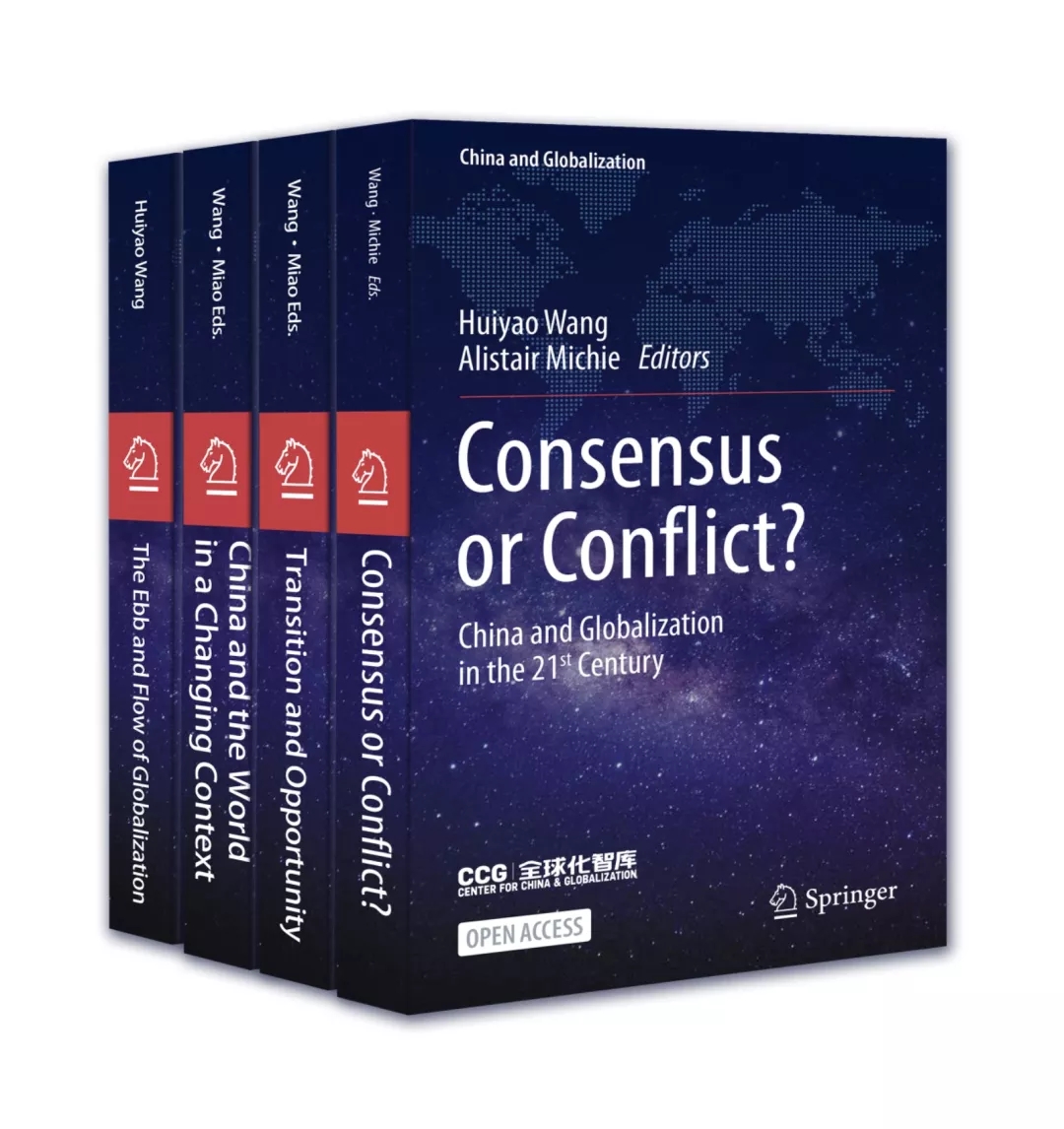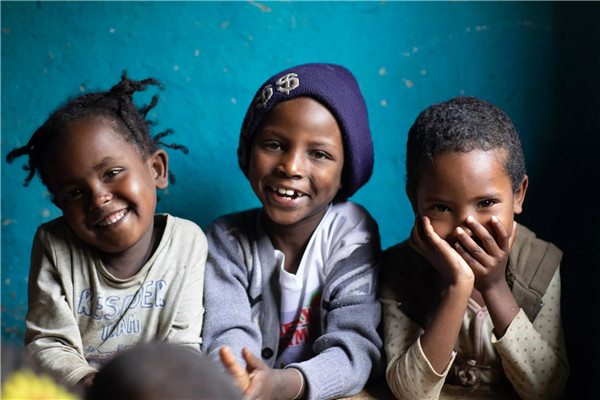Ambassador of Finland to China: Finland’s Open Code for Better Education—Opportunities for Sino–Finnish Cooperation
“Countries all around the world are now focusing increasingly on VET. We all understand the need for highly skilled labor at all levels as our societies become more advanced and more digitalized. Finland carried out VET reform several years ago and China is in the process of going through a similar process. Finland has come a long way in making VET the preferred choice for many youngsters. Perhaps cooperation in VET can be the next success story in our active bilateral relations. The world is increasingly connected and global learning should be an integral part of VET as well.”
——H.E. Mr. Jarno Syrjälä, Ambassador of the Republic of Finland to the People’s Republic of China
Finland is a country where people believe in education. Even today, there is a broad national consensus that Finland’s well-being is and will be based on knowledge and expertise. Our Government has set an ambitious vision for 2025: for Finland to be a country where everybody wants to learn more all the time.
In order to understand where Finland is heading, it is also necessary to understand where it is coming from. Over its more than 100 years of independence, Finland has been transformed from a poor, agrarian country into a prosperous, safe and highly progressive society. Today, Finland is the most stable country in the world. We believe education has been one of the most important reasons behind this success and education will continue to define Finland’s future.
Again, how did we get to this point? I would like to stress the importance of a clear vision, a long-term perspective and strategy supported by evidence-informed research. Finland’s success in international comparisons is partly explained by our foresight in educational trends, development-oriented evaluation and research, open- ness to new ideas and the formulation of reforms together with relevant stake- holders—researchers, teachers, parents and education experts. It is very important to ensure the different voices of all stakeholders are heard, and Finnish decision makers have done just that for decades now.
The basic principle of Finnish education is equality. All people have equal access to high-quality education and training, no matter their gender, location, social position or wealth. This is a fundamentally important principle, and we will do our best to ensure that equality is maintained also in the years to come. Another important aspect of this is that the quality of education is the same everywhere in Finland, no matter the size or location of the school. There is very little difference in what is learned and nearly all students complete comprehensive school within a targeted period of time.
2.1 It All Starts with ABC
There are deep historical roots for this development, which is related to our national awakening and religion. Literacy plays a key role in Lutheranism, the state and majority religion of Finland, as Christians are supposed to be able to read the Bible in their native language so they have firsthand access to original texts, and not just the hearsay of charismatic speakers. These values have stayed with Finns into today’s more secular era. Bishop Mikael Agricola studied under Martin Luther and translated the New Testament into Finnish in 1548. Agricola’s a primer called Abckiria (ABC Book) and is considered the first piece of literature in Finnish. The first schools in Finland were established by the Church in the Middle Ages and the Church was responsible for education until the 1850s. In the thirteenth century, there was a seminary for boys who planned to become priests in the town of Turku, and later, the first grammar school was founded in Turku in 1630, followed by the first university in 1640.
The Finnish literacy rate reached over 50 percent in the late eighteenth century and 80–90 percent by the mid-nineteenth century. As there were no schools in municipal outskirts, reading was taught in ambulatory schools. The ceremony of Confirmation at a church, a rite of transition to adulthood, was only permissible to the literate, and enabled entrance into marriage, for example. Official statistics are available since 1880, when literacy was 97.6%.
The early education system under Swedish rule was in the Swedish language. It consisted of primary education, meaning reading and writing, a trivial school teaching grammar, Latin, Greek, rhetoric and dialectics. After that, it was possible to enter the gymnasium, which prepared a select few for university studies. In the mid-nineteenth century, Finnish became an official language, and gradually replaced Swedish as the language used for schooling. In 1898, everyone was given the right to attend schools. Attendance reached 50% in 1911 and became mandatory in 1921, after Finland had gained its independence in 1917. At the time, municipalities were obliged to provide schooling. Free school lunches became a reality in 1948.
2.2 Equipped for the Future
A major educational reform was implemented in 1972–1977 based on the fundamental understanding of the need to provide good education for all. While the Finnish educational system has witnessed numerous reforms since then, this was the period during which its firm foundations were established. Today, the Finnish educational system consists of (i) early childhood education and care, (ii) pre-primary education, (iii) basic education, (iv) general upper secondary education, (v) vocational education, (vi) higher education and (vii) adult education. Today, we speak increasingly of lifelong learning, or continuous education, where each level of education equips us for the future.
Finnish legislation guides comprehensive education. National curriculum bases and local curricula are also in use. Teachers are at liberty to create their lesson plans independently based on the national and local curricula. Recently, curricula have included, for example, entities that cover several subjects, investigating daily phenomena and information and communications technology. Children often have the same teacher for the first six years. The teacher gets to know the students well and is able to develop courses to suit their needs. One important goal is that the students learn how to think for themselves and assume responsibility over their own learning.
Compulsory schooling has consisted of one-year pre-primary education for six- year-olds and nine-year basic education for children aged 7–16. The latest education reform is the extension of compulsory education due to become effective in 2021, raising the age of compulsory education to 18 years and extending compulsory education to upper secondary education. Upper secondary education consists of three-year general or vocational education and training leading to matriculation examination or vocational qualification, respectively.
Preschool education, comprehensive education and upper secondary education are free of charge and higher education is for the most part free of charge. As mentioned, the goal is for everyone to have an equal opportunity to receive high-quality education regardless of the family’s income and to grow up to become active citizens.
The ethos of the Finnish comprehensive school system has been to not leave any child behind. More resources are directed to children who need extra help, remedial teaching, classes in Finnish/Swedish as a second language, or classes for other native languages. Schools also offer health and counselling services.
2.3 In Teachers We Trust
The cornerstone of any school or educational system is its teachers. Well-trained, highly competent teachers are a vital part of the Finnish system. For example, all comprehensive school teachers have a relevant Master’s degree with pedagogical training. Teachers for grades 1–6 are specialized in pedagogy, while those teaching grades 7–9 are specialized in the subjects they teach.
In Finland, teaching is a respected profession, and an education in teaching is an attractive path for students to take. Only the best applicants are selected into such programs. In some cases less than 10 percent of the applicants are accepted, making it more difficult to become a teacher than it is to become a doctor. Teachers, as valued experts, have considerable autonomy in their work, and are well motivated to constantly develop their skills. Furthermore, for them, learning does not stop upon graduation.
At Finnish schools, great attention is placed on increasing the motivation to learn. This is central for the idea of lifelong learning. School is about work and requires effort, of course. Yet, why should we not try to find innovative ways to improve the joy of learning?
In the Finnish system, there is a holistic approach to children’s well-being and learning is at the core. Good results have been achieved despite relatively short school days, proper 15 min breaks in fresh air between classes, a small amount of homework, nutritious lunches and average costs. The idea is to maximize the potential of every student. Free learning materials, school meals and healthcare as well as guidance and counselling services are available to all students.
The Finnish education system is also flexible. There are no dead ends and decisions on one’s education are not binding: learners can always continue their studies in several directions. Adult education is also very popular. It includes a multitude of alternatives from comprehensive to higher education.
It is worth remembering that these good results were not achieved overnight. It has taken decades and many reforms to get the Finnish educational system to where it is now. Finland has advanced education in a systematic way in broad cooperation with stakeholders.
2.4 Trending Now: Vocational Education and Training (VET)
The rapid change of society in general is creating significant pressure for the education system to “get on with the times.” The way to globalization, digitalization and automation is paved with many challenges shared by countries around the globe. In this situation, the Finns will also have to take their already successful school system to a new level. This calls for intensive reforms, both in teacher education and at schools. As the world around us is evolving at an ever-increasing pace, so too must pedagogical methods, learning and ways of thinking at schools.
Lately, we have reformed our VET system so that it is ready to meet the future needs of a changing labor market. Many traditional professions are expected to disappear in the coming decades and entirely new ones will be born in their place.
In Finland, VET is not a second choice, but it is steadily becoming more and more attractive. Today, almost half of graduates choose VET. The main reasons for this are that work-based learning is included in all VET programs; there are opportunities for individual learning pathways and competence development, and also the fact that if a student is motivated enough, the pathway to higher education remains an option.
Finnish VET students are proud of their studies and, based on the recent surveys, VET students feel happier at school compared to students in other sectors. Vocational qualifications are no longer defined by the length of study in a curriculum and solely by the performance of the student. The objective is to build a flexible vocational education system, which responds in the best possible way to the needs of professional life and enhances lifelong learning, that is, the ability to learn.
Representatives of employers, workers and trade unions have been very closely engaged in the development of VET programs for years. Their role has been active both at the national and regional level as well as in individual schools.
In fact, close cooperation between VET and companies has made it possible for companies to influence the kinds of programs offered through VET and ensured that their own employees will have a chance to have adequate additional training, if needed.
2.5 Nothing Worth Having Comes Easy
Despite the many successes of the Finnish education system, it is not without its challenges and open questions. Developing education is a perplexing task in Finland as well. The popularity of science, technology, engineering and mathematics as subjects and related programs has been decreasing in many countries across the world, and Finland is no exception to this. In order to remain an innovative, future-oriented country, it is important to make these subjects more appealing. Finnish experts are currently trying to find ways to encourage young people, especially girls, to pursue careers in science and technology.
At the same time, the gap between boys’ and girls’ performance in basic education has been a topic of discussion for some time. While Finnish girls do very well in school, the boys are not achieving as high a level. It seems that boys are less interested in reading and in learning. Boys are also more likely to drop out of school. We are now studying the underlying reasons for this in order to find a solution to the problem. This is not easy in a society where the fight against needless gender stereotypes coincides. Addressing the differences in girls’ and boys’ learning needs requires mindfulness and sensitivity to interpret, and eventually correct, the phenomenon. If we do not address the situation, we cannot claim that we have learned from our past when only boys were allowed to go to school.
3 Sino–Finnish Cooperation in Education—Exploring the Common Ground
Today, Finland is the home of one of the best educational systems in the world. Professional freedom, resilience and capacity for renewal sum it up well. Finland is also a country where the most inspiring learning and education will take place in the years to come. It will be an interesting journey and, as said, we are ready to share our experiences. We are open for cooperation.
China and Finland share a reform-orientated approach to education. At the same time, for both of us, education is a public good with intrinsic value. While many thoroughly thought-out rules and regulations guide our educational systems, cooperation is about exploring and finding common ground. We believe there are numerous areas open for cooperation, such as early childhood education, teacher training, VET reform and academic exchange. Just how extensive this common ground is must be explored together.
Early childhood education plays an important part in promoting the well-being, learning and equality of children. Research indicates that early childhood education prevents learning difficulties and levels out differences in children’s development and socioeconomic background. The Finnish model is based on the “educare principle” where education, teaching, learning and care are integrated. This is where the love for learning can start, so it must be built in children’s own terms. A happy child learns better. There is considerable interest in China in the pedagogical models used in Finnish early childhood education and some kindergartens have already adopted similar models, but we can do much more.
Equal opportunity and superb teacher training are the building blocks of Finland’s comprehensive education. A motivated teacher teaches better. Our higher education institutions have offered teacher training packages for Chinese partner institutions for some time already. Numerous sister schools from all around China and Finland share learning and teaching experiences on regular basis and student groups have visited one another.
Countries all around the world are now focusing increasingly on VET. We all understand the need for highly skilled labor at all levels as our societies become more advanced and more digitalized. Finland carried out VET reform several years ago, and China is in the process of going through a similar process. Finland has come a long way in making VET the preferred choice for many youngsters. Perhaps cooperation in VET can be the next success story in our active bilateral relations. The world is increasingly connected and global learning should be an integral part of VET as well.
Chinese and Finnish higher education institutions have numerous linkages from student and academic staff mobility to research cooperation. As illustrated in the development of Finnish education system, we have built our successes on research-based knowledge. Scientific research benefits people and society through the advancement of knowledge. Openness and mobility of talent are the best guaran- tees of academic excellence and increase our prospects in finding solutions to both smaller and major challenges.
A high-level of civilization and a curiosity in all things are ingredients for a blossoming society. This is what we believe in Finland. Educational curricula can never be built solely on the basis of current economic needs and require a continuous drive to explore and build knowledge and innovation. Finland will continue its exploration of science, culture and knowledge sharing, wherever that journey may take us. We invite our friends in China and around the world to join us aboard.
H.E. Mr. Jarno Syrjälä is the ambassador of the Republic of Finland to the People’s Republic of China. He has been the ambassador of Finland to China since September 2017. Mr. Syrjälä joined the Ministry for Foreign Affairs of Finland in 1990. Before he took office in Beijing, Mr. Syrjälä was Director General of the Department for Africa and the Middle East at the Ministry for Foreign Affairs. He has previously served as ambassador of Finland to Saudi Arabia and also worked at diplomatic missions in Berlin, Washington D.C., Ramallah, Tel Aviv and Jakarta. Mr. Syrjälä was born in Turku in 1964. He holds a M.Ec. from the University of Vaasa.

Perspectives from Ambassadors to China
Editors: Huiyao Wang, Lu Miao
Published in March, 2022
ISBN: 978-981-16-8085-4
Publisher: Springer Nature Publishing Group
Download Book at Springer
https://link.springer.com/book/10.1007/978-981-16-8086-1
CCG’s new book China and the World in a Changing Context: Perspectives from Ambassadors to China has been released online. This open access book presents China and a changing globalized world from the perspective of 23 ambassadors to China, covers key development topics including economic growth, foreign policy, and SDG-related themes.

Series Editors: Huiyao Wang Lu Miao
Publisher: Springer Nature Publishing Group
芬兰驻华大使.jpg)
芬兰-.jpg)





